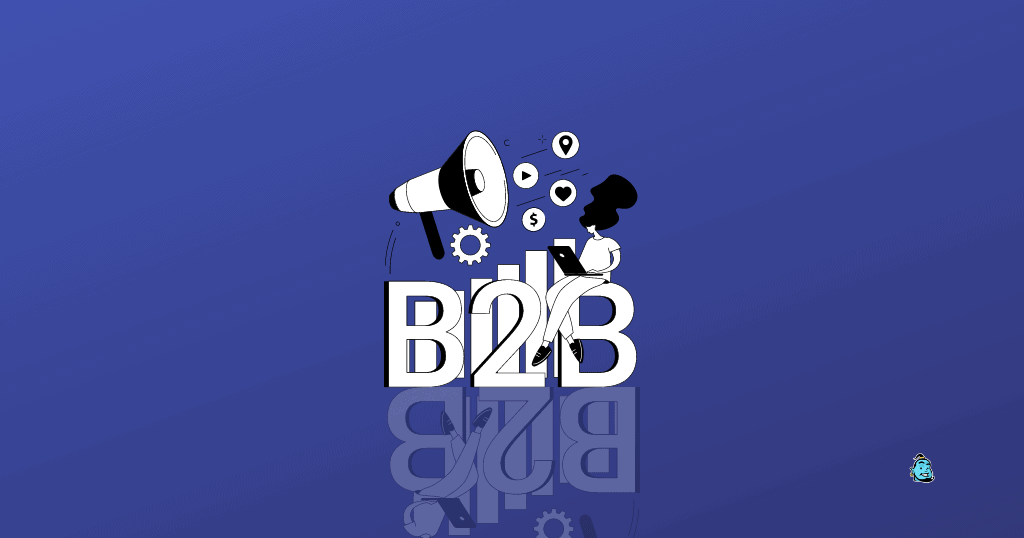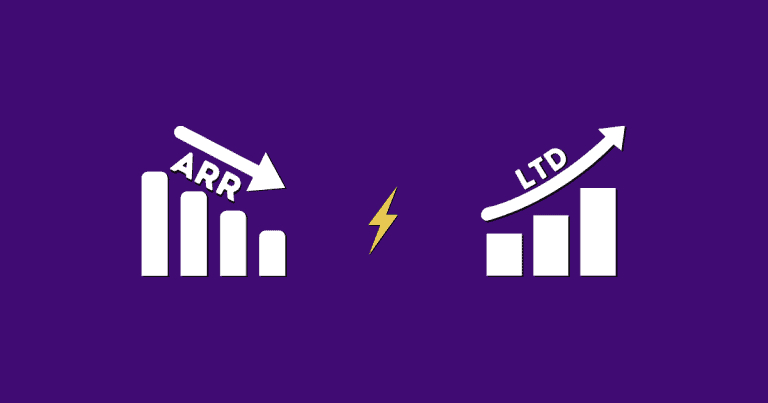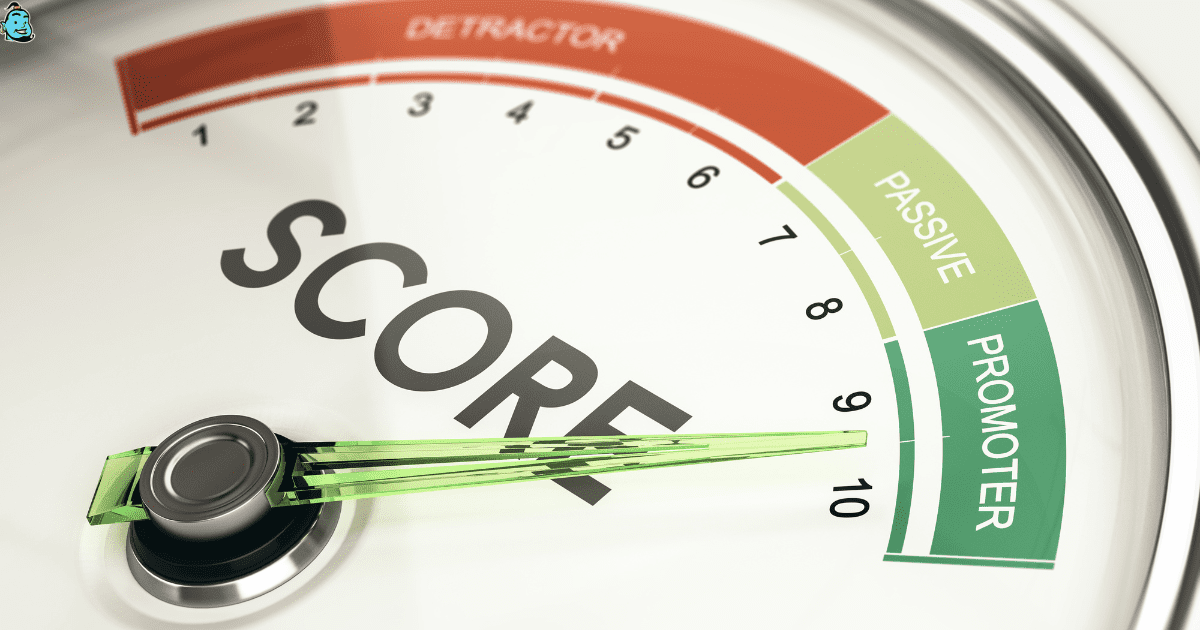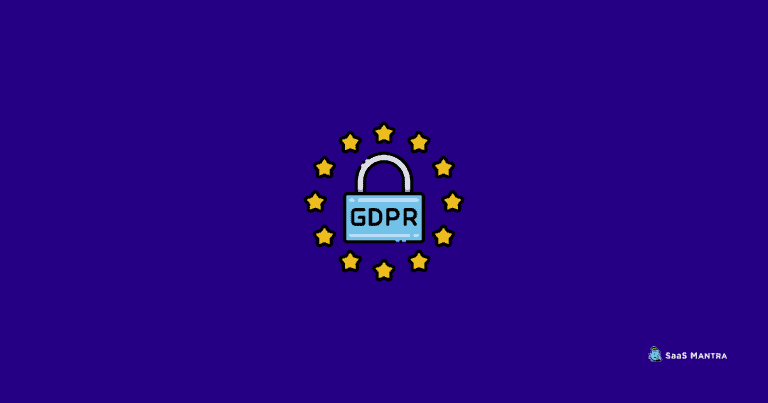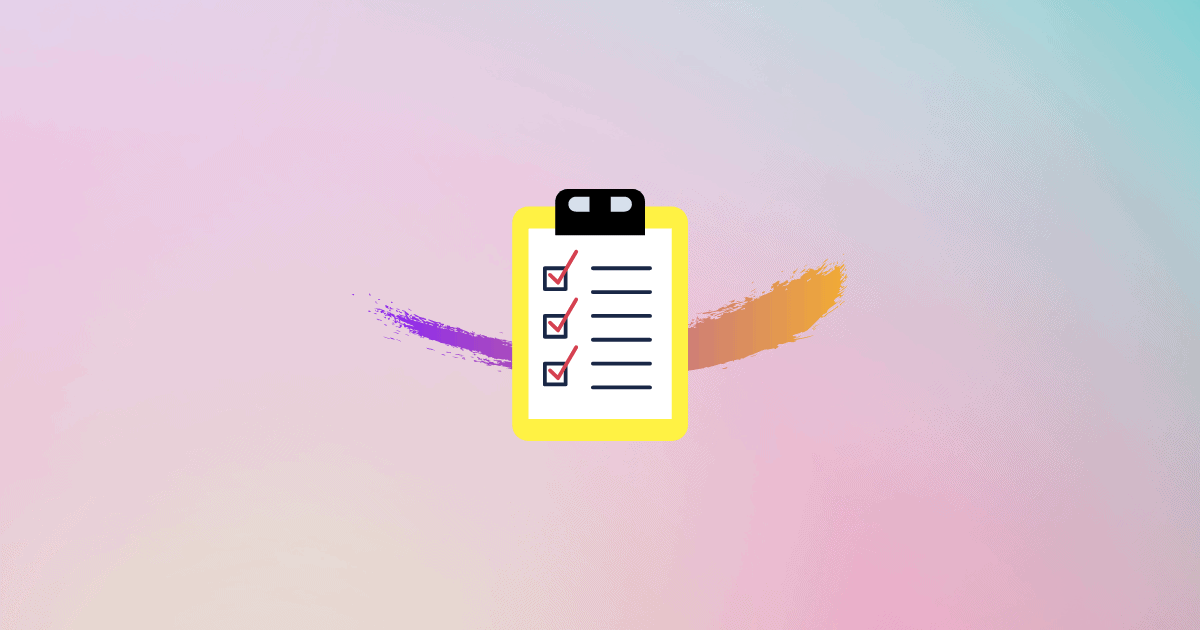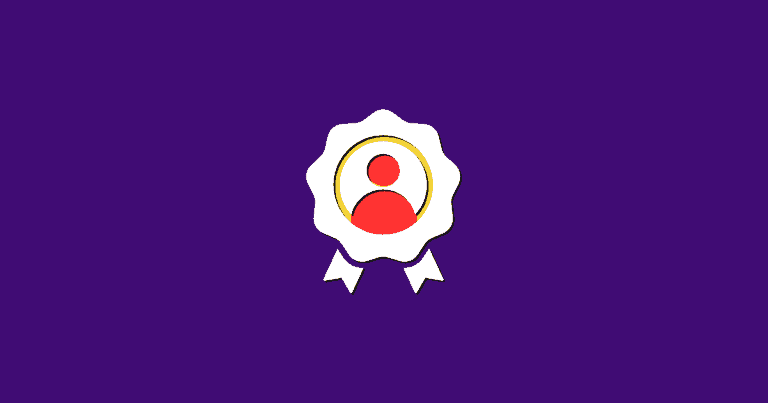10 Must-Know Strategies To Guide Your B2B SaaS Customers On Their Journey
Mapping out your customer’s journey offers key insights to optimize every stage, from acquisition to advocacy.
The success of a B2B SaaS depends on its ability to understand, anticipate, and meet the needs of its target audience. To provide an optimal experience throughout the customer journey and ensure the achievement of your desired outcomes, it is imperative that you make yourself familiar with the different phases and steps involved.
This article covers everything you need to know about mapping out a successful B2B SaaS customer journey – from defining goals to leveraging data for maximum returns.
1. Why is SaaS Customer Journey Mapping Important?
The customer journey is the series of steps a user takes when interacting with a product or service. It includes all touchpoints, such as the website, app, email campaigns, support channels, and more.
Mapping out each step helps companies gain insight into their customers’ experiences and develop strategies for improvement. Companies can also use these insights to provide tailored experiences and increase loyalty among their users.
Customer journey mapping is an essential part of any successful SaaS business and should not be overlooked.
By understanding your customers’ behaviors and preferences, you can create better products that result in increased usage and improved customer satisfaction.
- It helps you predict customer behavior
- It helps you tailor your marketing & sales approach
- It helps you create a better customer experience
2. Identify customer touchpoints
Are you looking for ways to engage with your customers and help them to use your SaaS product more effectively? If so, then you could benefit from mapping customer touchpoints along their journey towards utilizing your services.
Every customer journey is unique and requires special attention when planning a successful customer experience. B2B SaaS products face an additional challenge as they are specifically designed to meet the needs of businesses rather than individuals.
In order to efficiently guide customers through this complex process, customer touchpoints should be accurately identified and mapped out in both pre-sale and post-sale stages.
Here are 4 steps to identify the customer touchpoints that are unique to b2b SaaS customers & use them to map your customer journey.
- Identify Key Customer Touchpoints
- Analyze Your Existing Data Set
- Map Out Core Personas
- Capture Journeys Using Funnel Visualization Tools
3. Analyze customer behavior
Analyzing customer behavior is a powerful tool for mapping out your customer journey and understanding the decisions customers make when interacting with your business. As a B2b SaaS provider, you must be prepared to meet ever-changing needs by creating and refining customer journeys that drive engagement and revenue.
Explore how to leverage analytics tools to analyze customer behavior and map their journey through your SaaS platform:
- Use analytics tools to monitor user activity.
- Use heat maps to identify customer engagement and areas of improvement
- Monitor customer feedback and surveys for insights into their journey
- Leverage A/B testing to optimize the customer experience
4. Evaluate customer motivations & goals
B2B SaaS companies have an extraordinary opportunity to impact their customers. However, making a successful move in this area requires diligent effort. Understanding customer needs and motivations is critical for successfully mapping B2B SaaS solutions effectively.
Conducting an analysis of buyer motivations and goals is essential for coming up with strategies that solve the customer’s problems.
Tracking customer goals and motivations is an essential part of mapping an effective customer journey for any SaaS company. This kind of insight provides valuable data that can help your team better engage with customers, as well as understand their overall satisfaction with the product or service you offer.
Here are some tips for evaluating customer motivations and goals when mapping b2b SaaS customer journeys:
- Identify customer’ motivations & goals
- Analyze pain points & assumptions
- Conduct surveys and interviews in order to obtain feedback
- Monitor customer engagement metrics
5. Set up tracking for progress & performance
Tracking progress and performance is an important part of any business, no matter its size or form. It’s especially important for B2B SaaS companies because they often have complex operations and long sales cycles. By setting up tracking systems, these companies can better understand their customer journeys and create more effective products, services, and marketing campaigns.
Setting up the right tracking tools to monitor performance is essential for businesses aiming to map out their customer journeys, analyze user engagement patterns, assess market trends, and evaluate return on investment (ROI).
Without this crucial step, decision making would be based mostly on gut feeling rather than data. Here are 4 key steps businesses need to take to set up tracking for mapping out B2B SaaS businesses.
- Identify Your Customer Journey Metrics
- Gather Data Points & Establish KPIs
- Set Up Tracking Tools & Systems
- Review Results & Iterate Strategies
6. Define customer journey stages
Mapping out customer journey stages for a b2b SaaS business is incredibly important. It should be an integral part of any organization’s customer acquisition and retention strategy. By understanding how customers progress from awareness to advocacy, business owners can pinpoint where improvements in processes need to take place.
Here are the stages of customer journey mapping for a b2b SaaS business: awareness, consideration, adoption, retention, expansion, and advocacy.
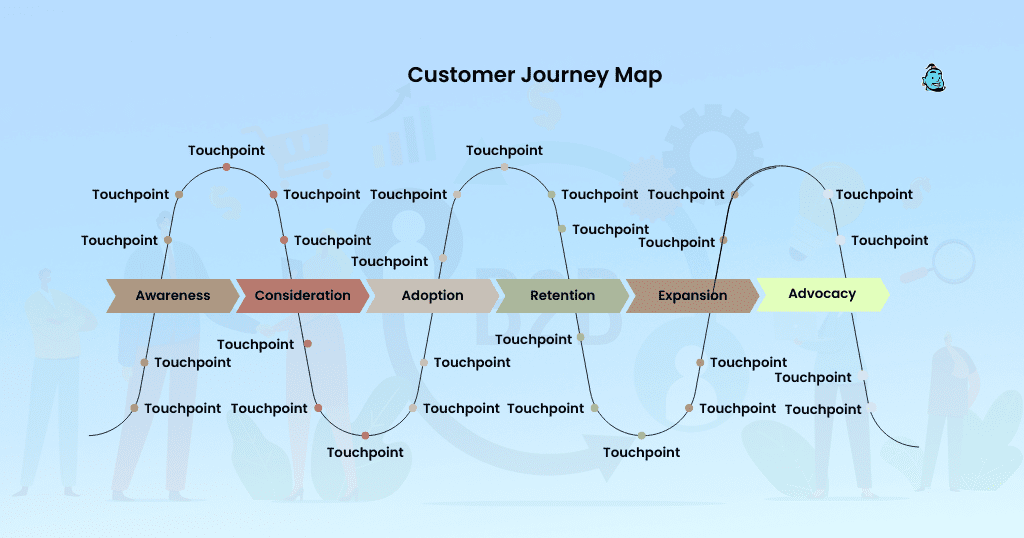
a. Awareness
During the awareness stage, potential customers are just familiarizing themselves with your brand and determining if it’s a good fit for their needs. At this stage, things like search engine optimization (SEO), content marketing, newsletter campaigns, webinars, and online events should be utilized to draw potential customers into your funnel.
b. Consideration
The consideration phase involves researching different options and deciding which product or service suits them best.
Content such as case studies and product reviews should be accessible during this stage to help potential clients make an informed choice when choosing your offering over others.
c. Adoption
Once customers have chosen the right solution for their needs they’ll move on to the adoption stage where they will officially become paying users of your platform. The onboarding process at this point should be easy-to-use which encourages quicker adaption including helpful tutorials and ample support resources to assist users every step of the way.
d. Retention
Retaining existing customers should always be a priority when mapping out a customer journey because it’s far less expensive than constantly acquiring new customers. To keep customers engaged over time, you should focus on providing exceptional customer support in order to create a positive user experience that encourages loyalty and trust in your brand.
e. Expansion
Expansion occurs when active users begin upgrading their plans with new features or add-ons provided by your software solution You can use targeted campaigns such as discounts and coupons to encourage current customers to upgrade their plans so that they can take advantage of expanded features.
f. Advocacy
Advocacy is often referred to as “word-of-mouth” marketing but it can include anything from active endorsement (liking/sharing content) to quiet support (by staying subscribed month after month). Customer advocacy is essential for any B2B2 SaaS business looking to increase visibility among potential buyers.
7. Design customer journey maps
Do you know how to maximize customer experiences in the B2B SaaS space? Your customers’ journeys through the sales funnel are constantly changing, and can make or break conversions.
To ensure that your business is aware of potential customers needs, and adopting the most effective strategies for them, design customer journey maps.
Customer journey mapping gives organizations visibility into their workflows from a customer’s perspective, helping them understand the entire process from discovery to adoption. By understanding what motivates leads and existing customers to act in certain ways, businesses can optimize their processes for improved retention and satisfaction with personalized resources.
This proves particularly true for B2B SaaS companies, who aim to nurture long-term sustainable relationships with their customers.
Here’s how you can create maps that give you accurate and useful data about your users:
- Research your audience
- Survey your users
- Create personas from user data
- Draw your CX map
- Analyze and adapt your user experience maps
8. Develop tactics that increase customer engagement
Mapping B2B SaaS customers journey and developing tactics to increase customer engagement is key for long-term sustainability in any business.
As the competition intensifies, it has become increasingly challenging for businesses to keep their customers engaged and thereby increase retention rates. By understanding the customer’s journey and developing an effective strategy, you can create compelling tactics that will not just attract customers but also keep them coming back for more.
Here are a few tips on how to go about mapping B2B SaaS customer journey and develop engaging tactics:
- Define Your Customers and Their Journey
- Understand Their Needs at Each Stage
- Develop Engaging Tactics Tailored To The Need Of Your Customers
- Set Up Meaningful Metrics To Track Progress
9. Leverage customer feedback in the mapping process
Leveraging customer feedback in the mapping process is essential for mapping a successful SaaS B2B business. Knowing what your customers need and how they prefer to use your services will help you create a customer experience that meets their demands while still allowing you to differentiate yourself from the competition.
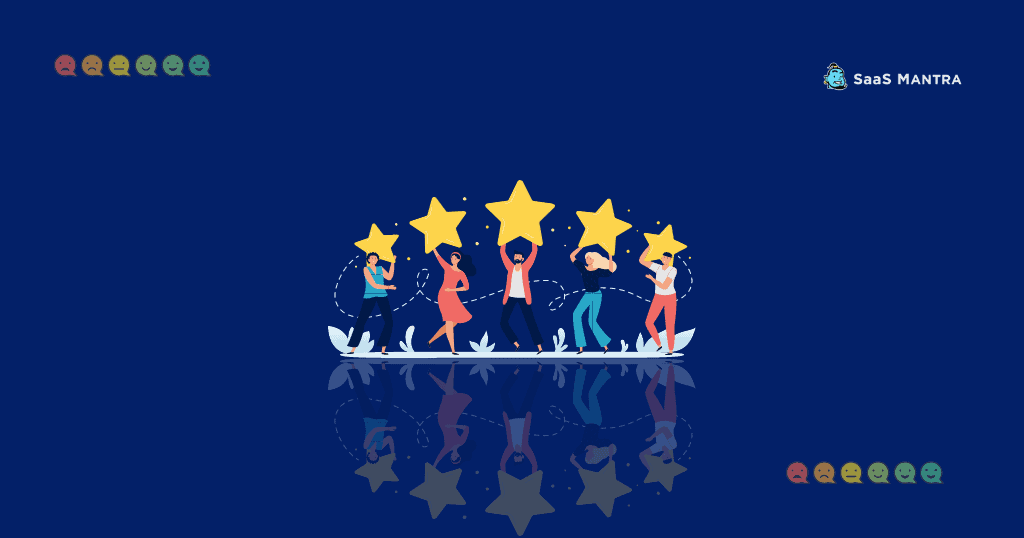
Here are some ways you can use customer feedback in your mapping process:
- Create an engaging surveys
- Listen intently on calls & emails
- Develop personas & focus groups
- Analyze online reviews
10. Final Thoughts on Customer Journey
Mapping out the customer journey for your B2B SaaS business can be a great way to improve customer retention and satisfaction.
By understanding how customers interact with your product, you can identify areas where you can make improvements and create a tailored experience that meets their needs. By establishing a customer journey, you will be better equipped to anticipate customer needs and deliver a better product that meets their expectations.
